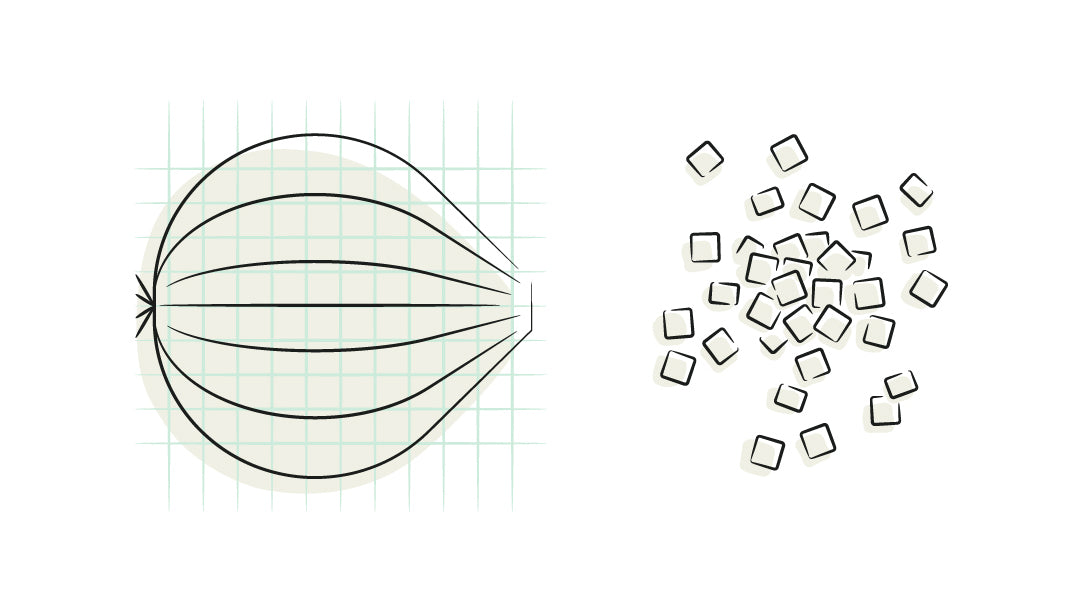
How you handle your knives is just as integral as the blade itself. When it comes to chopping, dicing, and mincing, sharpening your skills will allow you more control over your food prep. So, let’s cut to the chase and start dicing!
Directing Your Dice
To dice means to cut into cubes of the same size. Small, medium, and large dice are terms used throughout professional kitchens to indicate specific sizes, and often these standards vary by establishment. However, if you ask French chefs, they will say a small dice is a 1/4-inch cube, a medium dice is a 1/2-inch cube, and a large dice is a 3/4-inch cube.
You might be wondering what a 1/4-inch cube of a veggie looks like. Let’s use a potato as an example. Start by trimming a thin slice off the length of the potato, cutting away just enough so that it can lie flat on your cutting board without rolling around. Once you have your first flat side, square off the other sides and the two ends to create a perfectly rectangular shape. You can now slice your potato into even planks of the desired thickness. If you want a small dice, cut 1/4-inch planks. Take your planks and stack them on top of each other and slice them into 1/4-inch thick strips. Then, cut your strips into even cubes, and you’ll have a superbly diced spud.
Keeping Your Skills Sharp
For food prep success, it’s more crucial that every small dice cube is exactly the same size, rather than worrying about them being exactly a 1/4-inch. Cuts of similar proportions cook at the same rate, allowing more control over your food. If your dices are the same dimensions, you’ll have deliciously cooked cuts ready for dinner.
Share: